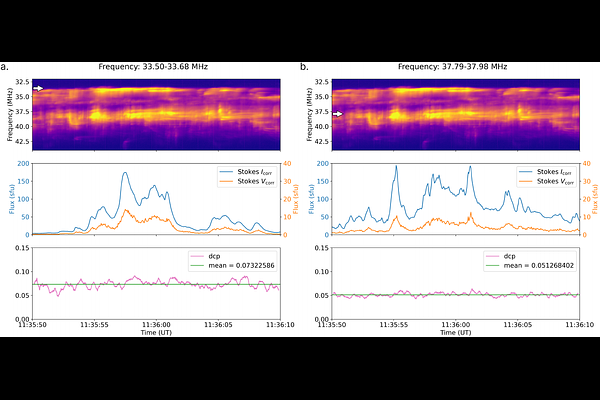Imaging and spectropolarimetric observations of a band-split type II solar radio burst with LOFAR

Imaging and spectropolarimetric observations of a band-split type II solar radio burst with LOFAR
S. Normo, D. E. Morosan, P. Zhang, P. Zucca, R. Vainio
AbstractType II solar radio bursts are generated by electrons accelerated by coronal shock waves. They appear in dynamic spectra as lanes drifting from higher to lower frequencies at the plasma frequency and its harmonic. These lanes can often be split into two or more sub-bands that have similar drift rates. This phenomenon is called band-splitting, and its physical origins are still under debate. Our aim is to investigate the origin of band-splitting using novel imaging and spectropolarimetric observations of a type II solar radio burst from the Low Frequency Array (LOFAR). We used LOFAR imaging at multiple frequencies and time steps to track the locations of the radio sources corresponding to the two components of the band-split emission lane. In addition, we estimated the degree of circular polarisation (dcp) for both components using LOFAR's full Stokes dynamic spectra. From the imaging of the type II burst, we found two close but clearly separated emission regions clustered over several frequencies spanning each split band. One emission region corresponds to the lower frequency band and the other to the higher frequency band of the split lane. Using the full Stokes dynamic spectra, we also found the dcp to be very similar for both bands. The two distinct emission regions suggest that the split bands originate from two separate regions at the shock. The similar values of dcp for both sub-bands correspond to similar values of magnetic field strength in the two regions and indicate little to no change in the emission region plasma. Thus, our findings are in contradiction with previous theories, which have suggested that split bands originate in the same region but upstream and downstream of the shock. Instead, our results suggest that both bands originate in two separate upstream regions since we find a clear separation in locations and no magnetic compression.